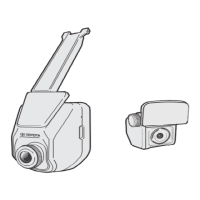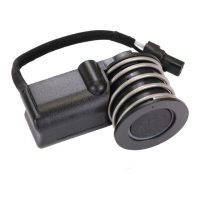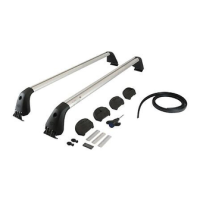ELECTRONIC CONTROL SYSTEM
- Lean Mixture Senso
r
LEAN MIXTURE SENSO
R
The lean mixture sensor is constructed in
basically the same way as the zirconia element
type oxygen sensor, but its use differs
.
Theoretical
air-fuel ratio
Engine EC
U
Heate
r
Protective
cove
r
OPERATION
The zirconia element type oxygen sensor
operates on the principle that a voltage will be
generated if the difference in the oxygen
concentration inside and outside the sensor is
great
.
In the lean mixture sensor, however, a voltage
applied to the zirconia element when the
temperature is high (650°C [1202°F] or greater),
results in a current flow with a value which is
proportional to the oxygen concentration in the
exhaust gas
.
In other words, when the air-fuel mixture is rich,
there will be no oxygen in the exhaust gas, so
no current will flow through the zirconia
element
. When the air-fuel mixture is lean, on
the other hand, there will be a lot of oxygen in
the exhaust gas and the amount of current
flowing through the zirconia element will be
large, as shown in the following graph
.
The lean mixture
sensor has been adopted to
assure that the air-fuel ratio is kept within a
predetermined range, thereby improving fuel
economy as well as drivability
.
This sensor
also comes with a heater to heat the
zirconia element
.
The heater
is controlled in the
same way as the heater
of the oxygen
sensor
.
For further
details, see page 114
.
ELECTRICAL CIRCUITR
Y
Lean
mixture
sensor
OHP 2
8
REFERENCE
When the air-fuel mixture is extremely lean
(about 20
:1), combustion will be accompanied
by reductions in NOx (oxides of nitrogen), CO,
and HC (hydrocarbon
gas),
as shown in the
graph below
. This is a good thing up to a
point
. However, if the air-fuel mixture is too
lean,
not only will HC concentrations
increase,
but the engine will lose power
and/or misfire
.
CO HC
(%)
I
(PP
M
12
~
8
d
4
60
0
40
0
20
0
0
\ \HC
\
\ \~
CO
\
\
NOx
❑
NOx
(PPM)
300
0
200
0
100
0
10 12 14 16 18 20 2
2
0
Richer
-
Air-fuel
ratio
~
Leane
r
OHP 28
33

